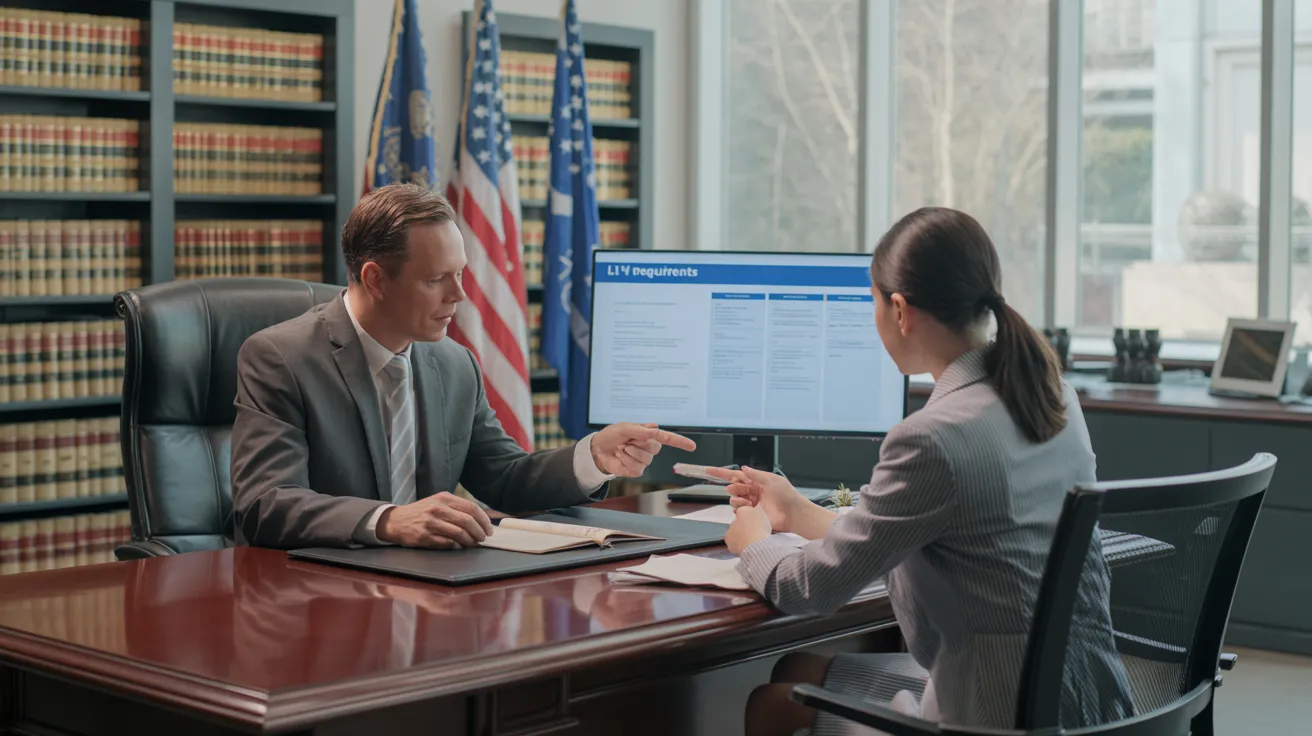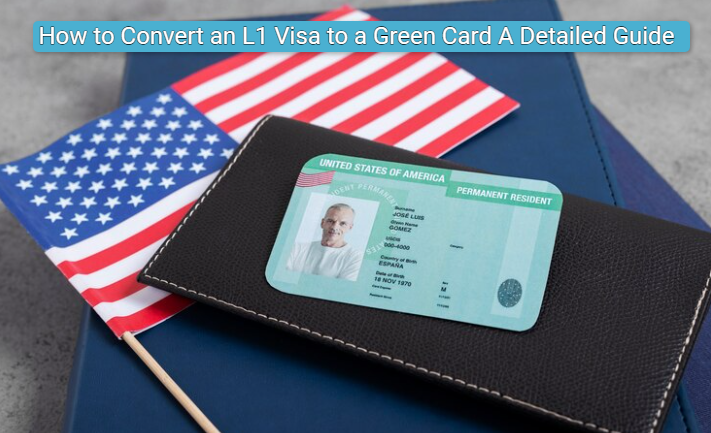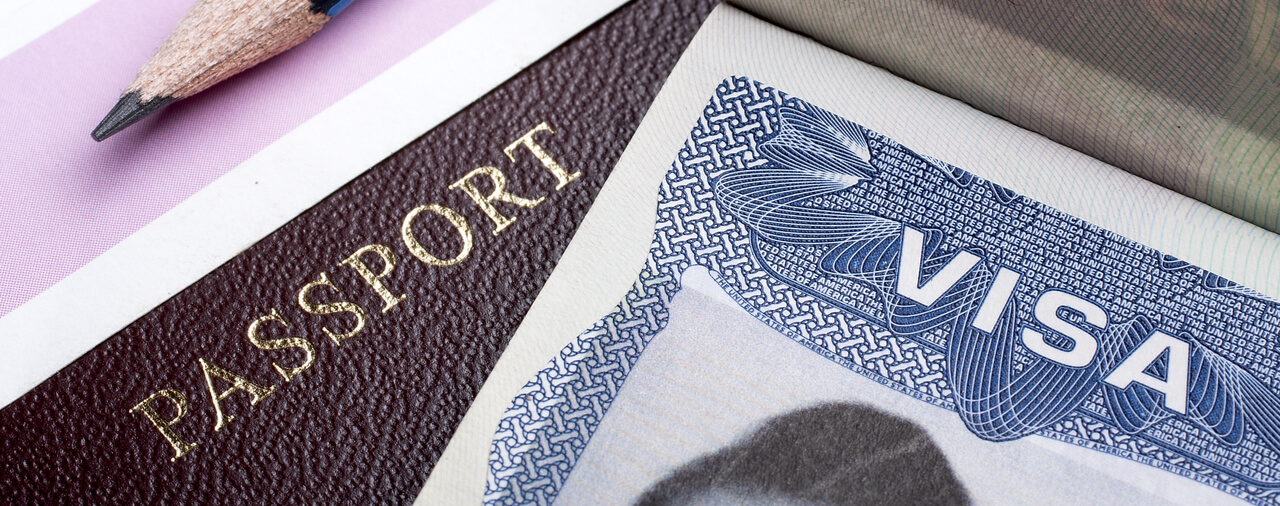Unlocking Opportunities: A Comprehensive Guide to the L1 Visa Process
The L1 visa procedure presents a vital path for multinational firms seeking to move vital workers throughout boundaries. Understanding the subtleties of qualification standards, the differences in between L-1A and L-1B visas, and the intricacies of the application process can substantially impact a candidate's success. However, maneuvering this facility landscape is not without its obstacles, and mindful interest to documentation and company sponsorship is important. As we discover the vital components of this procedure, the strategies for overcoming prospective obstacles will come to be evident, disclosing exactly how educated preparation can open a world of possibilities.
Comprehending the L1 Visa
Recognizing the L1 visa requires acknowledging its significance as a vital tool for international firms seeking to move knowledgeable employees between worldwide offices. This non-immigrant visa category helps with the movement of execs, managers, and specialized expertise employees to the USA, therefore enabling companies to preserve operational connection and harness global ability effectively. The L1 visa is separated right into two key categories: L-1A for supervisors and execs, and L-1B for staff members possessing specialized knowledge.The L1 visa serves a critical function in improving a company's one-upmanship in the international marketplace - L1 Visa. By allowing companies to move their vital personnel, businesses can ensure that vital tasks are managed by certified individuals who are currently aware of the business's society and functional processes. This inner transfer mechanism not only fosters understanding sharing yet additionally advertises advancement and collaboration throughout borders.Moreover, the L1 visa is typically preferred for its fairly straightforward application procedure compared to other visa groups, as it permits double intent, allowing holders to pursue irreversible residency while on a momentary job visa. This attribute makes the L1 visa specifically appealing for both companies and workers, as it streamlines the pathway for proficient experts to develop long-term residency in the United States
Eligibility Requirements
Qualification for the L1 visa depends upon a number of key criteria that ensure both the worker and the employer fulfill certain certifications. This non-immigrant visa is created for multinational companies to move employees from foreign offices to united state counterparts.Firstly, the company has to be a certifying company, which includes a parent company, branch, affiliate, or subsidiary of an U.S. organization. The company must have been doing service for at the very least one year both in the united state and abroad. This guarantees that the firm has sufficient operational stability and a legitimate presence.Secondly, the staff member needs to hold a managerial, executive, or specialized knowledge placement. For L1A visas, the applicant must demonstrate managerial or executive qualifications, while L1B visas concentrate on specialized knowledge pertaining to the organization's products, solutions, or procedures. Additionally, the worker should have benefited the international entity for a minimum of one continual year within the last 3 years prior to their application.Lastly, the employee's duty in the U.S. must straighten with their previous placement, guaranteeing that their skills and proficiency are leveraged for the business's benefit.
Kinds Of L1 Visas
The L1 visa classification makes up two key kinds created to help with the transfer of staff members within international companies: the L1A visa for managers and executives, and the L1B visa for staff members with specialized expertise. Each kind serves distinctive objectives and has certain eligibility criteria.The L1A visa is customized for people who hold supervisory or executive placements within a business. This visa allows top-level staff members to move to a united state branch, subsidiary, or associate of the exact same organization. Applicants for the L1A visa have to demonstrate that they have been employed in a supervisory or executive ability for at the very least one continual year within the past 3 years before their application. Furthermore, this visa uses a longer duration of keep, at first approved for 3 years, with the possibility of expansions for approximately 7 years.In contrast, the L1B visa is meant for specialists with specialized understanding related to the firm's products, services, or procedures. To qualify, applicants need to verify that their expertise is critical to the company and that they have actually functioned for at least one continual year within the last three years in a duty that required this specialized expertise. The L1B visa is initially granted for 3 years, with extensions offered for approximately five years.Both visa types are important for firms looking for to improve their global operations by leveraging competent employees, consequently promoting development and efficiency within the united state market.
Application Process
Steering with the L1 copyright procedure includes a number of important steps that must be diligently followed to guarantee a successful result. The process starts with the U.S. company, who have to first establish eligibility by demonstrating a qualifying partnership with the foreign entity and verifying that the worker meets the certain needs for the L1 visa classification being sought.Once eligibility is confirmed, the employer launches the procedure by filing Type I-129, the Application for a Nonimmigrant Worker, with the U.S. Citizenship and Immigration Services (USCIS) This type needs to be accompanied by a thorough description of the task responsibilities to be carried out, the organizational structure of both the U.S. and international entities, and the worker's credentials. It's essential to verify that all details is precise and full, as omissions or inaccuracies can result in delays or denials.Upon approval of the I-129 application, the next action includes the staff member using for the L1 visa at a united state consular office or consular office in their home country. This phase needs the conclusion of Kind DS-160, the Online Nonimmigrant copyright, and scheduling an interview. Throughout the interview, the applicant has to provide proof supporting their certifications and the employer's petition.After the visa is granted, the worker can get in the United States to operate in the assigned function. On the whole, mindful preparation and adherence per step of the application process are necessary for an effective L1 visa end result.
Needed Paperwork

Important Kinds Needed
Navigating the L1 Visa procedure needs cautious focus to the crucial kinds and documentation needed for a successful application. The key form required is the Form I-129, Petition for a Nonimmigrant Worker, which have to be finished and submitted by the U.S. company. This form describes the information of the work offer and the certifications of the employee seeking the L1 Visa.Alongside Kind I-129, the applicant will certainly require to complete Form I-539 if coming with relative are also obtaining visas. Furthermore, the employer has to give evidence of the certifying partnership in between the U.S. entity and the international entity, typically requiring the submission of corporate documents such as posts of consolidation or economic statements.Moreover, it is important to consist of the L Category Supplement to Kind I-129, which defines the kind of L Visa being requested-- either L-1A for supervisors and executives or L-1B for staff members with specialized expertise. Ultimately, candidates must guarantee that all kinds are signed and dated suitably, as insufficient entries can lead to hold-ups or rejections. Appropriately putting together these crucial kinds lays the structure for a smoother L1 copyright procedure.

Supporting Evidence Needs
Supporting documentation is crucial for a successful L1 copyright, as it substantiates the cases made in the request. Applicants have to give a variety of records to demonstrate eligibility for the visa, which is classified right into two primary types: proof of the certifying partnership in between the U.S. and foreign entities and evidence of the applicant's qualifications.To develop the relationship, candidates ought to submit documents such as corporate business charts, economic declarations, and evidence of possession. These files confirm that the foreign business has a certifying partnership with the U.S. employer, whether as a parent business, subsidiary, branch, or affiliate.For the candidate's credentials, crucial documents consist of a detailed work letter from the international company, outlining the applicant's task title, tasks, and period of work. Additionally, instructional credentials, such as levels and diplomas, ought to be given to show the applicant's expertise in the relevant field.
Company Sponsorship Records

Usual Challenges
Maneuvering the L1 visa procedure provides a number of usual obstacles that applicants should recognize. Secret concerns often consist of strict paperwork requirements, prospective delays in handling times, and the necessity for rigorous legal compliance. Comprehending these barriers can help candidates better prepare and reduce dangers throughout their copyright journey.
Documentation Requirements
The L1 copyright process typically presents significant challenges associated with documentation requirements. Candidates need to give extensive documents to develop eligibility, which can result in confusion and potential hold-ups. Secret records consist of proof of a qualifying connection in between the U.S. and international employer, proof of the candidate's employment background, and detailed info concerning the job role in the U.S.One common obstacle is gathering enough evidence to show the nature of the certifying relationship. Firms frequently have a hard time to present clear organizational graphes or economic declarations that show the connection in between the entities. Additionally, guaranteeing that letters of assistance from companies precisely reflect the applicant's task responsibilities and qualifications is essential, as unclear summaries can cause denials.Another problem occurs from the demand for comprehensive job descriptions that align with the L1 visa categories. Candidates must articulate not just their current function yet additionally their supervisory or customized understanding responsibilities plainly. This demands a detailed understanding of both the candidate's setting and the governing language made use of in L1 applications.
Processing Time Delays
Experiencing delays in processing times is an usual challenge encountered by L1 visa applicants, typically causing frustration and uncertainty. A number of elements add to these hold-ups, including high application quantities, raised examination of applications, and administrative backlogs within the U.S. Citizenship and Migration Solutions (USCIS) Applicants may discover that handling times can vary substantially relying on the solution facility managing their application, as each center has its very own work and performance levels. Furthermore, the complexity of the applicant's instance, such as the need for comprehensive documents or clarification, can better prolong wait times.In some instances, issues related to the candidate's current immigration condition or previous visa history might also lead to added hold-ups, as USCIS might need further evaluation or details. It is vital for prospects to continue to be proactive during this duration, keeping open communication with their employers and legal reps to deal with any possible concerns promptly.Understanding these processing time challenges can help L1 visa candidates plan for possible hold-ups and reduce the effect on their shift and occupation plans. Perseverance and diligence are crucial merits in steering this elaborate process.
Lawful Conformity Issues
Many L1 visa applicants come across lawful compliance issues that can complicate their trip toward obtaining the visa. Understanding and sticking to the particular laws set by the U.S. Citizenship and Immigration Solutions (USCIS) is essential. Common challenges include showing the certifying relationship in between the international and united state employers, as well as showing that the applicant possesses the requisite specialized expertise or managerial capacity.Additionally, applicants need to give detailed documents describing their work obligations, company framework, and economic stability of the U.S. entity. Insufficient or imprecise documents can lead to hold-ups or perhaps rejections. Employers should also guarantee explore your L1 Visa that they abide by labor legislations, consisting of wage and working problem criteria, which can influence visa eligibility.Another common problem involves preserving compliance with the terms of the visa when provided. Modifications in employment standing, job obligations, or business framework can require changes to the visa, which if not dealt with promptly can cause lawful problems. Because of this, staying informed about conformity requirements and seeking legal advice when necessary is important to browse the intricacies of the L1 visa procedure efficiently.
Tips for Success
Success in the L1 copyright process usually rests on meticulous preparation and interest to detail. To boost your possibilities of authorization, start by extensively understanding the qualification demands for both the L1A and L1B visa groups. Examine whether your position at the firm certifies as managerial, executive, or specialized understanding, as this categorization significantly impacts your application.Next, gather extensive documents that substantiates your claims. This consists of organizational graphes, thorough work descriptions, and proof of the business's operational structure. Clear and concise proof of the certifying relationship in between the U.S. entity and the foreign entity is essential. Verify that all records are arranged logically and presented in a specialist way, as this shows your commitment and seriousness regarding the application.Engage the services of a seasoned migration lawyer who focuses on L1 visas. Their expertise can show important, assisting you with facility policies and guaranteeing that all documentation abides by existing legislations. Furthermore, plan for the meeting by exercising response to usual inquiries and being ready to review your function and payments to the business in depth.
Frequently Asked Inquiries
Can Family Members Go Along With the L1 Visa Holder?
Yes, member of the family of L1 visa holders, including spouses and unmarried children under 21, can come with the primary visa holder. They may likewise request L2 visas, which enable them to live in the USA.
The Length Of Time Can I Remain On an L1 Visa?
The L1 visa allows initial keeps of as much as three years, with the opportunity of extension. L1A visa owners may remain for a maximum of seven years, while L1B visa holders can stay for five years.
Can L1 Visa Owners Look For an Eco-friendly Card?
Yes, L1 visa holders can get a permit. L1 Visa Requirements. They might seek irreversible residency via employment-based categories, commonly needing sponsorship from their company, given they fulfill the essential certifications and paperwork demands
What Takes place if My L1 copyright Is Denied?
If your L1 copyright is denied, you might obtain a notice outlining the factors for rejection. You can seek to appeal the choice, reapply, or discover alternate visa choices based upon your scenarios.
Exist Any Traveling Constraints With an L1 Visa?
An L1 visa usually enables worldwide travel; nevertheless, re-entry to the united state is contingent upon maintaining valid standing. Travelers ought to ensure conformity with visa conditions to avoid difficulties upon return
Final thought
